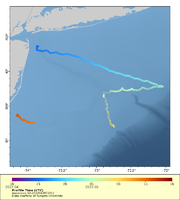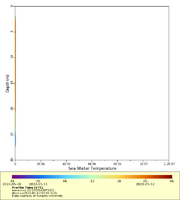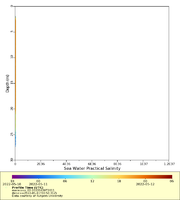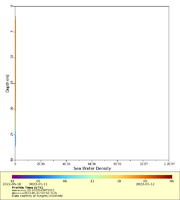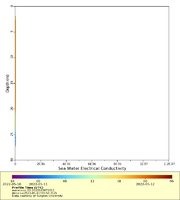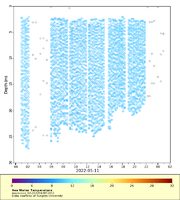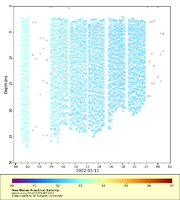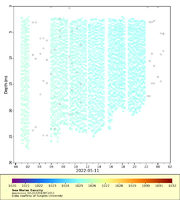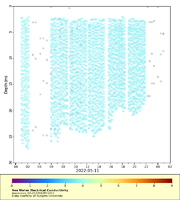| Dataset | maracoos_02-20220420T2011 |
|---|---|
| Glider | maracoos_02 |
| Status | Completed |
| Summary | This project is conducting seasonal deployments to investigate carbonate chemistry and monitor ocean acidification in the Mid-Atlantic Bight. The glider used for the automated observation includes an integrated deep rated version of the Ion Sensitive Field Effect Transistor (ISFET)-based pH sensor. The pH sensor unit is complemented with existing glider sensors including a CTD, a WETLabs FLBBCD ECO puck configured for simultaneous chlorophyll fluorescence and optical backscatter measurements, and an Aanderaa Optode for measuring dissolved oxygen. This approximately 21 to 30 day deployment out of Sandy Hook, NJ will run cross-shelf transects zig-zagging southward and ultimately coming back inshore along E line for a planned recovery out of Tuckerton, NJ as the battery pack allows. This glider track will cover Atlantic sea scallop and Atlantic surfclam habitats in the MAB. The real-time dataset contains CTD, dissolved oxygen, chlorophyll a, CDOM and optical backscatter measurements. Dissolved oxygen and pH data will be processed post-deployment. This is the first deployment of this glider in 2022 |
| WMO ID | 4802995 |
| Attribution | NOAA Ocean Acidification Program and U.S. Integrated Ocean Observing System |
| Time Coverage Start | 2022-04-20 20:16:29 UTC |
| Time Coverage End | 2022-05-12 00:50:31 UTC |
| Registered | 2022-04-21 |
| Deployed | 2022-04-20 |
| Operator | Rutgers University |
| Institution | Rutgers University |
| Data Provider | rutgers |
| # Profiles | 1419 |
| Days Deployed | 22 |
| BBox North | 40.363 |
| BBox South | 39.199 |
| BBox East | -74.151 |
| BBox West | -72.034 |
